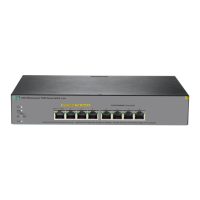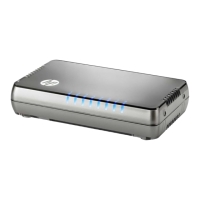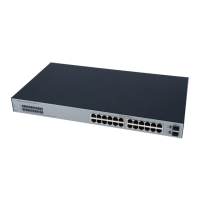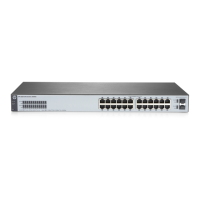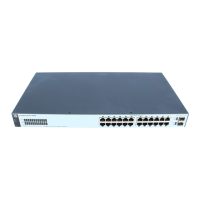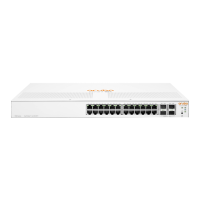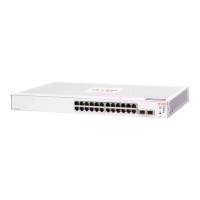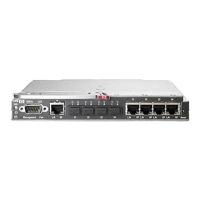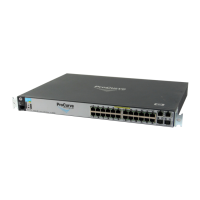Because of the increased speed provided by 1000BASE-T (Gigabit-T), network cable quality is more
important than for either 10BASE-T or 100BASE-TX. Cabling plants being used to carry 1000BASE-T
networking must comply with the IEEE 802.3ab standards. In particular, the cabling must pass tests for
Attenuation, Near-End Crosstalk (NEXT), and Far-End Crosstalk (FEXT). Additionally, unlike the cables for
100BASE-TX, the 1000BASE-T cables must pass tests for Equal-Level Far-End Crosstalk (ELFEXT) and
Return Loss.
When testing your cabling, be sure to include the patch cables that connect the switch and other end devices
to the patch panels on your site. The patch cables are frequently overlooked when testing cable and they
must also comply with the cabling standards.
Technology Distance Specifications
Technology Supported cable type Multimode fibermodal
bandwidth
Supported distances
100-FX multimode fiber any up to 2,000 meters
1000-T twisted-pair copper N/A up to 100 meters
1000-SX multimode fiber 160 MHz*km
200 MHz*km
400 MHz*km
500 MHz*km
2 - 220 meters
2 - 275 meters
2 - 500 meters
2 - 550 meters
1000-LX multimode fiber 400 MHz*km
500 MHz*km
2 - 550 meters
2 - 550 meters
single mode fiber N/A 2 - 10,000 meters
Mode Conditioning Patch Cord
The following information applies to installations in which multimode fiber-optic cables are connected to a
Gigabit-LX port. Multimode cable has a design characteristic called “Differential Mode Delay”, which requires
the transmission signals be “conditioned” to compensate for the cable design and thus prevent resulting
transmission errors.
Under certain circumstances, depending on the cable used and the lengths of the cable runs, an external
Mode Conditioning Patch Cord may need to be installed between the Gigabit-LX transmitting device and the
multimode network cable to provide the transmission conditioning. If you experience a high number of
transmission errors on those ports, usually CRC or FCS errors, you may need to install one of these patch
cords between the fiber-optic port in your switch and your multimode fiber-optic network cabling, at both ends
of the network link.
The patch cord consists of a short length of single mode fiber cable coupled to graded-index multimode fiber
cable on the transmit side, and only multimode cable on the receive side. The section of single mode fiber is
connected in such a way that it minimizes the effects of the differential mode delay in the multimode cable.
NOTE:
Most of the time, if you are using good quality graded-index multimode fiber cable that adheres to the
standards listed in this appendix, there should not be a need to use mode conditioning patch cords in
your network. This is especially true if the fiber runs in your network are relatively short.
38 Technology Distance Specifications
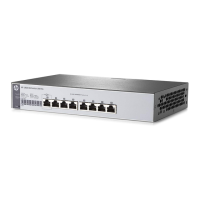
